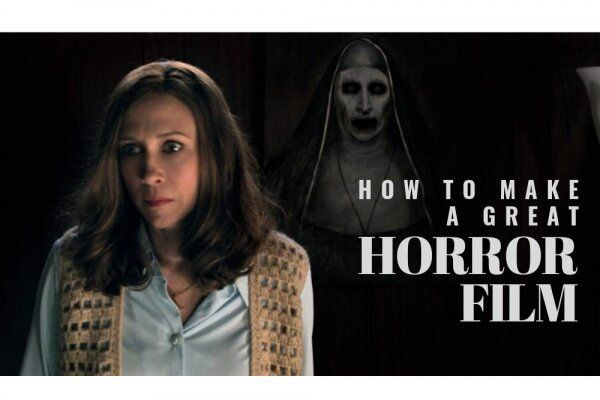
For more than a century, Horror filmmaking has existed to haunt our minds, explore our darkest fears, and satisfy our thrill-seeking desires. But how is it that something fictional can be so effective in evoking fear and dread? Let’s have a look at what the genre’s most influential pioneers have to say about it.
ALFRED HITCHCOCK
“There is no terror in the bang, only the anticipation of it.”
Frequently referred to as the ‘master of suspense’, Hitchcock has thought us that terror doesn’t come from the ‘bang’, or jump scare if you will, but the context and tension leading up to it. A great example can be seen in ‘The Birds’, where Melanie is ignorantly unaware of the increasing number of birds gathering behind her in an excruciatingly long scene. The emotional response to this scene will contrasts to an earlier one, when she was suddenly attacked by a bird. Both are effective, but as Hitchcock states, “There is a distinct difference between ‘suspense’ and ‘surprise’, and yet many pictures continually confuse the two.”

JAMES WAN
“I’m a huge fan of not showing you things and letting your imagination do the rest”
James Wan is widely regarded as the filmmaker that revitalized the Horror genre after half a decade of unimaginative scares. A big part of what makes his films so spectacularly terrifying is the idea of giving the audience just enough information for their minds to run wild. After all, the human mind can conjure a more terrifying threat than we could ever see on screen. As soon as we are explicitly shown the threat, it'S no longer as scary; there is nothing scarier than the unknown. The same concept applies to the way Wan crafts the film’s sound and atmosphere. He stated, “Music and sound design can be very powerful with how you use it, but also the absence of sound can say a lot as well.”

Similarly, Steven Spielberg stated, “When my mechanical shark in ‘Jaws’ was being repaired and I had to shoot something, I had to make the water scary, I relied on the audience’s imagination, aided by where I put the camera. Today, it would be a digital shark. It would cost a hell of a lot more, but never break down. As a result, I probably would have used it four times as much, which would have made the film four times less scary. Jaws is scary because of what you don’t see."
JORDAN PEELE
“Every great horror movie comes from a true fear, and ideally, it’s a universal fear.”
Despite all the monsters, effects, and supernatural forces sprinkled throughout the genre, every great Horror film can be stripped down to a simple core fear. The key is to not only make the threat simple and believable, but one that is relatable to all. Peele’s ‘Get Out’ focused on the fear of racism, while ‘Us’ explores the idea that we are our own enemy. A great example is David F. Sandberg’s ‘Lights Out’, a simple concept derived from the fear of what’s lurking in the darkness when the lights are off.

DAVID F. SANDBERG
“That build towards the scare, those moments of tension, are where you want to be. That’s the fun of it.”
The most successful Horror filmmakers understand that true terror comes from building the tension and atmosphere, rather than the scare itself. Putting unnecessary, frequent, or undeserving jump scares will of course momentarily shock the audience, but It will not scare them. If done wrong, it can actually make your film less scary as the audience will no longer believe in the story or put their trust you. Jump scares are highly valuable, so creatively design only a handful of them after long sequences of high tension, rather than littering them throughout. The fun of horror is in the dread, so don’t be scared to hold on those moments.

Horror should be fun, and crafting the tension is more about the mysterious build. By planting ideas in the audience’s head, rather than forcing a shock. The great filmmakers have taken a psychological approach, rather than 'showing' their own version of what they perceive should be scary. So, next time you’re creating your horror-filled debut ask yourself, are you showing too much? How have you crafted the scare? Is the build slow enough? Is the build effective in evoking dread? Is the horror relatable and realistic?
Need some more inspiration? Damian Mc Carthy’s ‘He Dies at The End’ is a haunting lesson in how to make a great Horror film…. in under 5 minutes.
Add a comment